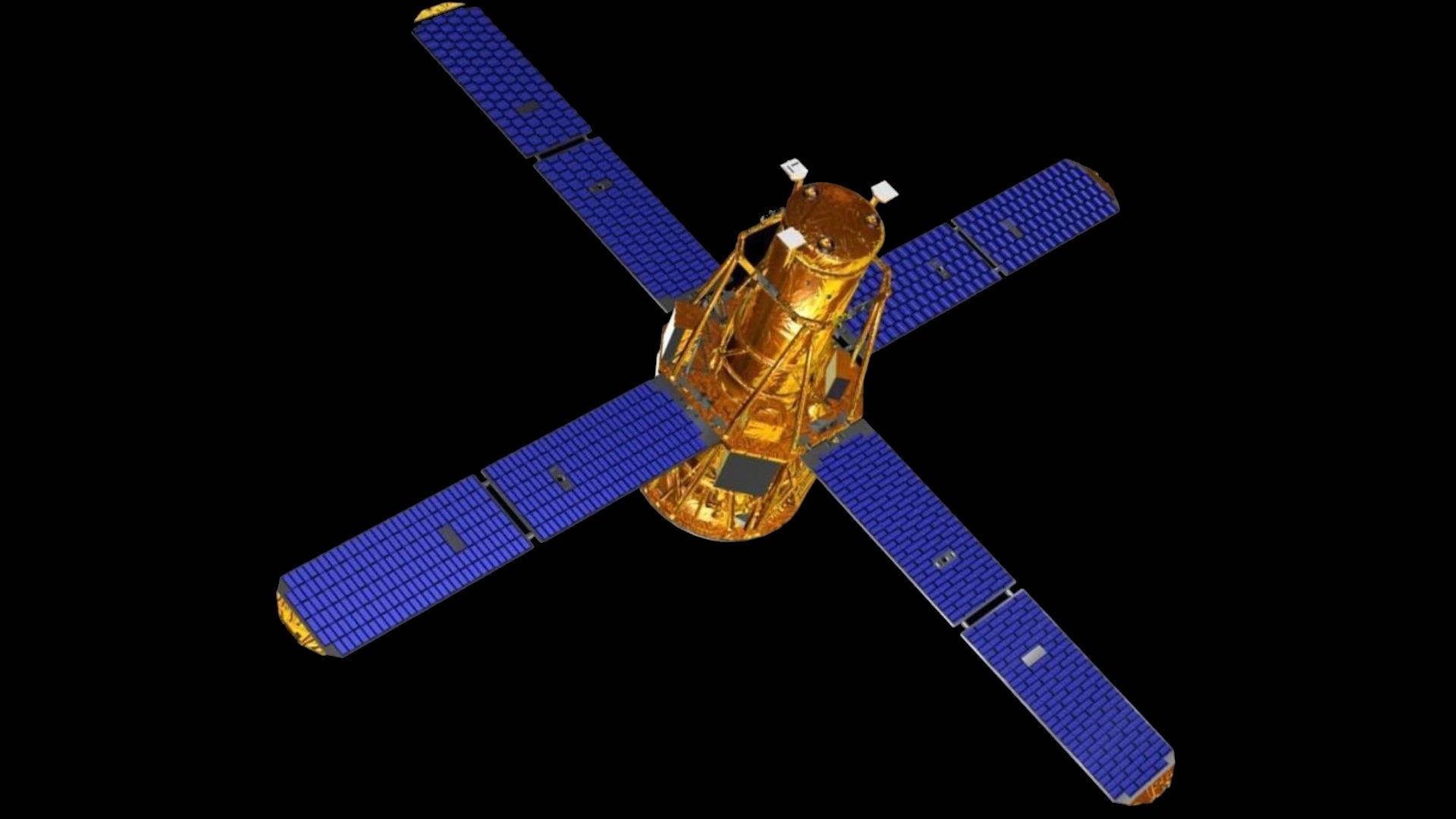Dead NASA satellite crashes to Earth over the Sahara Desert

A dead NASA spacecraft crashed to Earth Wednesday night (April 19) over northern Africa, according to the U.S. military.
NASA's RHESSI satellite reentered Earth's atmosphere at 8:21 p.m. EDT on Wednesday (0021 GMT on April 20), according to the space agency.
"The Department of Defense confirmed that the 660-pound spacecraft re-entered the atmosphere over the Sahara Desert region, at approximately 26 degrees longitude and 21.3 degrees latitude," NASA officials wrote in an update today (April 20).
Those coordinates place the fall near the Sudan-Egypt border, astrophysicist and satellite tracker Jonathan McDowell noted via Twitter this morning. RHESSI was moving northeast when it came down, McDowell added.
Related: Getting space junk under control may require an attitude shift
According to the US Space Force, NASA's retired RHESSI satellite reentered over 26E 21N (Sudan/Egypt border) heading NE over southern Egypt, at 0021 UTC Apr 20. pic.twitter.com/p5nTWLvFG1April 20, 2023
Most of the spacecraft likely burned up in Earth's atmosphere, though some pieces were expected to make it to the ground, NASA officials said.
RHESSI (short for "Reuven Ramaty High Energy Solar Spectroscopic Imager") launched to low Earth orbit aboard a Pegasus XL rocket in 2002, on a mission to study the sun like never before.
Breaking space news, the latest updates on rocket launches, skywatching events and more!
RHESSI was tasked with imaging "the high-energy electrons that carry a large part of the energy released in solar flares," NASA officials wrote in today's update.
"It achieved this with its sole instrument, an imaging spectrometer, which recorded X-rays and gamma rays from the sun," they added. "Before RHESSI, no gamma-ray images nor high-energy X-ray images had been taken of solar flares."
The satellite continued operating until 2018. During that long tenure, "RHESSI documented the huge range in solar flare size, from tiny nanoflares to massive superflares tens of thousands of times bigger and more explosive," NASA officials wrote. "RHESSI even made discoveries not related to flares, such as improving measurements of the sun's shape, and showing that terrestrial gamma-ray flashes — bursts of gamma rays emitted from high in Earth's atmosphere over lightning storms — are more common than previously thought."
RHESSI was just one piece in a huge cloud of space junk that cruises around our planet: Space surveillance networks are currently tracking more than 30,000 pieces of orbital debris.
And these are just the ones big enough to detect — generally, objects at least as large as a softball. According to the European Space Agency, Earth orbit harbors about 1 million pieces of space junk between 0.4 inches and 4 inches (1 to 10 centimeters) wide.
Even objects in that size range can pack a wallop, considering how fast orbiting objects move. For instance, in low Earth orbit — the domain of the International Space Station, SpaceX's Starlink internet satellites and many other craft — bodies zip around our planet at about 17,500 mph (28,160 kph).
In-space collisions generate new debris clouds, which in turn increase the probability of future smashups, potentially leading to a devastating cascade known as the Kessler Syndrome. Exploration advocates around the world are increasingly stressing the need to get space junk under control, so this nightmare scenario does not come to pass.
Mike Wall is the author of "Out There" (Grand Central Publishing, 2018; illustrated by Karl Tate), a book about the search for alien life. Follow him on Twitter @michaeldwall. Follow us @Spacedotcom, or on Facebook and Instagram.

Michael Wall is a Senior Space Writer with Space.com and joined the team in 2010. He primarily covers exoplanets, spaceflight and military space, but has been known to dabble in the space art beat. His book about the search for alien life, "Out There," was published on Nov. 13, 2018. Before becoming a science writer, Michael worked as a herpetologist and wildlife biologist. He has a Ph.D. in evolutionary biology from the University of Sydney, Australia, a bachelor's degree from the University of Arizona, and a graduate certificate in science writing from the University of California, Santa Cruz. To find out what his latest project is, you can follow Michael on Twitter.
